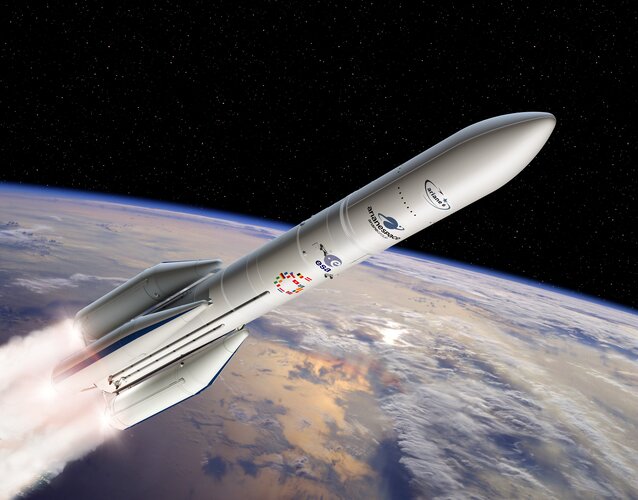“This key milestone is a cornerstone of the validation of the Ariane 6 integration concept which was imagined at the very beginning of this wonderful adventure. Achieving it is a source of great pride and a terrific motivator for Ariane 6 teams”, says Jérôme Crubilhé, ESA Mechanical Engineer.
Before receiving the central core, launch pad systems underwent a battery of tests to check the “cryogenic connection system” of umbilical cords carrying hydrogen and oxygen fuel – liquified at -253C and -183C respectively – that will keep the rocket topped up in the critical moments before liftoff. The system must also deliver helium and nitrogen used for flushing and purging.
Critically, these systems are designed to remain connected to the rocket until nearly the moment of liftoff. The method demands careful choreography of large mechanical systems but brings several advantages by improving reliability and availability while eliminating some equipment that is not needed in flight. The net result is to reduce the rocket’s dry mass and recurring costs.
Also, last-moment decoupling does away with some purging lines needed by Ariane 5, to reduce recurring costs and the dry mass of the rocket.
Daniel Neuenschwander, ESA’s Director of Space Transportation, said: “I am delighted to see solid progress towards first flight. Ariane 6 marks a new era in reliable, competitive and autonomous European spaceflight.
“Ariane 6 is also the foundation for a series of developments which will maintain Europe’s gateway to space into the 2030s.”
Ariane 6 is a modular launch vehicle using either two or four P120C strap-on boosters, depending on mission requirements. The P120C engine does double duty, also serving as the first stage of ESA’s new Vega-C rocket.
The reignitable Vinci engine which powers the upper stage allows Ariane 6 to deliver multiple payloads to different orbits on a single launch. After payload separation a final engine burn deorbits the upper stage so that it does not become a debris threat in space.
Ariane 6 development is project-managed and funded by ESA, which also acts as launch system architect. ArianeGroup is design authority and industrial prime contractor for the launcher system and CNES is prime contractor for the Ariane 6 launch base at Europe’s Spaceport. Arianespace is the launch service provider of Ariane 6.



